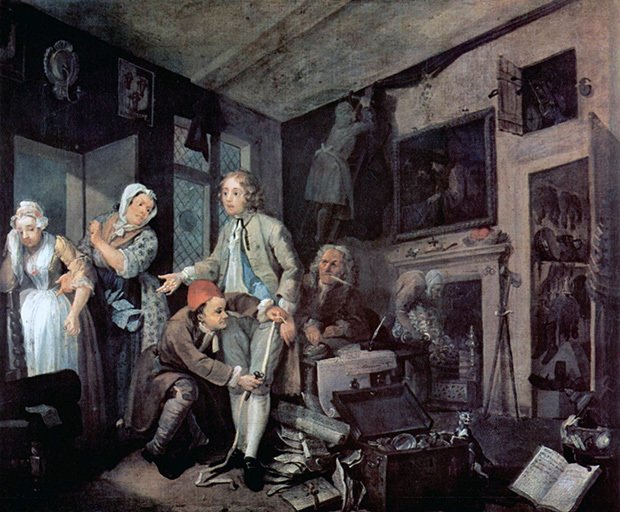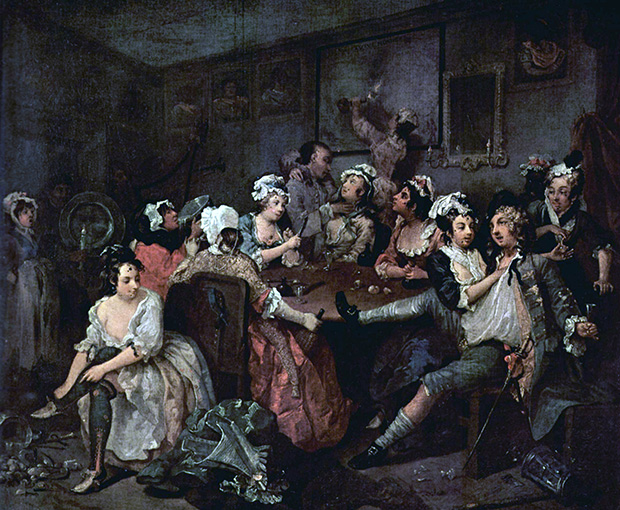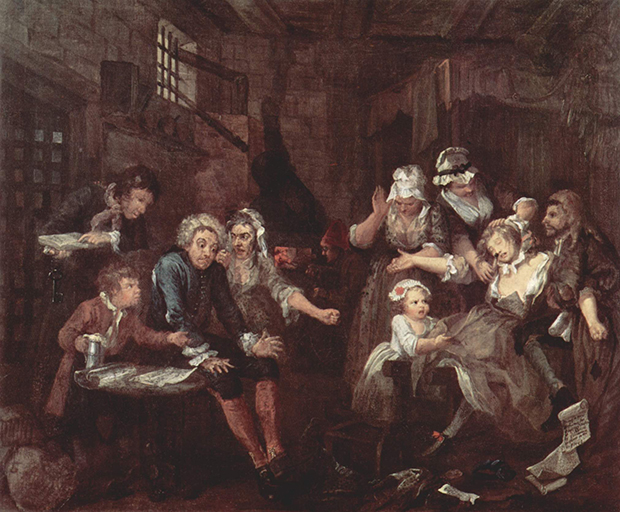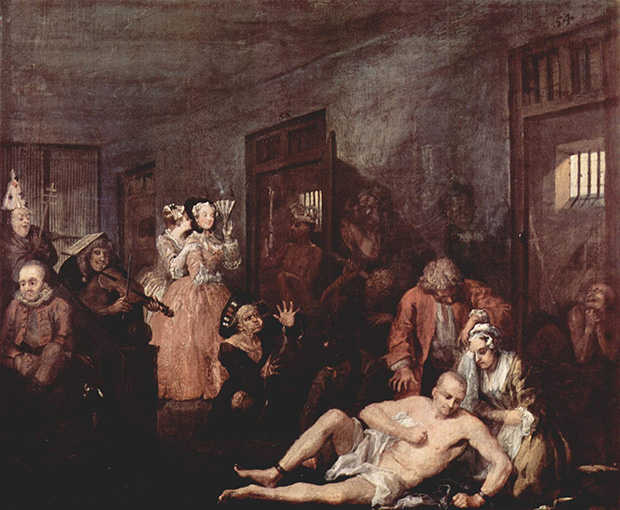
Gombrich Explains Hogarth
On the anniversary of his birth we find out about the 'A Rake’s Progress' creator's appeal to Puritans
In 2014, it seems odd to think of a time when English audiences took no interest in English contemporary art. Yet this was the case when one of London’s most famous painters and engravers first sought to win favour and commissions.
William Hogarth, who was born in the British capital today, 10 November, in 1697, came of age in a continent divided by religion. As the great art historian and Phaidon author, EH Gombrich makes plain in his canonical book, The Story of Art, the citizens of the northern, Protestant countries in Europe, couldn’t help but admire the glory of the Roman Baroque style, even if the gaudiness offended their puritan sensibilities.
Gombrich writes in chapter 23 of the book headed: The Age of Reason, “the victory of Protestantism in England, and the Puritan hostility to images and to luxury, had dealt the tradition of art in England a severe blow. Almost the only purpose for which painting was still in demand was that of supplying likenesses, and even this function had largely been met by foreign artists such as Holbein and Van Dyck, who were called to England after they had established their reputations abroad.”

Hogarth might have made his living illustrating books, yet he believed he should receive the kind of commissions that went to his Continental rivals. Gombrich points out that Hogarth “knew the methods of the Italian artists of his time, of the Venetian painters of the type of Guardi, who had taught him the trick of conjuring up the idea of a figure with a few spirited touches of the brush.”
The artist “felt that he had it in him to be as good a painter as those whose works were bought for hundreds of pounds from abroad” writes Gombrich, “but he knew that there was no public for contemporary art in England.”
In response, Hogarth created a new type of serial picture making for viewers brought up in a puritan tradition. “He planned a number of paintings which should teach the people the rewards of virtue and the wages of sin,” Gombrich explains. “He would show a Rake’s Progress, from profligacy and idleness to crime and death.”

It was a novel approach, which the artist compared to the practices of the playwright and the theatrical producer, and it proved remarkably successful. His series of eight paintings, A Rake’s Progress, painted in 1732-3, and recreated in a series of prints in 1735, remains part of Britain’s cultural heritage. Yet, the narrative qualities of Hogarth’s pictures overshadowed his painterly abilities.
“What is remarkable in Hogarth is that," Gombrich writes, "for all his preoccupation with his subject-matter, he still remained a painter, not only in the way he used his brush and distributed light and colour, but also in the considerable skill he showed in arranging his groups.”

Unfortunately, most of his contemporary admirers enjoyed Hogarth’s works not as paintings, but as prints. “As a painter,” Gombrich writes, “the connoisseurs of the period did not take him seriously and, throughout his life, he waged a grim campaign against fashionable taste.” Only years later, would another eighteenth-century English painter, Joshua Reynolds, win over English society; but that’s another story.
For greater insight into this somewhat overlooked English painter, consider this Hogarth overview, and for greater insight into this era and many others, buy a copy of EH Gombrich's The Story of Art here.